As I start this out today, there are so many things Zinging around in my head, it’s hard to tell which way this edition of LaRueSews will go. I’ve heard writers say that sometimes they start out with just an idea and then just let it roll.
I think I’ll tell you a bit about the quilt retreat I attended two weeks ago. YES, it has been two weeks. The retreat was sponsored by a guild from a neighboring town. Some of the women in my guild also belong to that one, so both guilds were invited. The planning and carrying out committees were top notch. It’s not always easy to plan a weekend event that will appeal to twenty-five women. It seems that everyone has their own ideas of how things should be done.
The retreat was sponsored by a guild from a neighboring town. Some of the women in my guild also belong to that one, so both guilds were invited. The planning and carrying out committees were top notch. It’s not always easy to plan a weekend event that will appeal to twenty-five women. It seems that everyone has their own ideas of how things should be done.
Since I’m not a member of the sponsoring guild, I got to just go and have fun. One of the planners had the terrific idea of sending out a checklist of things we all needed to bring with us. It was a whole page of stuff including sewing supplies, materials, rulers, clothes, even goodies. I found it really helpful in not leaving anything behind that I would need. As it tuned out, the only thing I didn’t take along was my quilters cut and press.* That’s a neat tool that has a cutting mat on one side and an ironing mat on the reverse. I had left it in the sewing room, not with my stack of "take alongs" that I had piled by the back door.
Most of us arrived at Shacco Springs, Alabama at about ten o’clock on Friday morning. Shacco Springs is a beautiful conference center near Talladega, AL. We stayed in a building that had two wings of guest rooms with an adjoing conference room and full kitchen. Most people shared rooms by two’s and three’s. The rooms were very similar to a motel room. (Very comfortable accommodation.) We all set up our sewing supplies and got ready to sew, seated, two or three people to a table, with sewing machines and supplies all around. There were about twenty-five of us in all.
Each of us brought with us the fabrics that we had cut ahead of time, so we could sew right away, not time for cutting this day. The list we were given specified that we should choose fabrics of light, medium and dark values, with yardage requirements to finish the project. We were also given a specific list of how to rotary cut the fabrics. When we arrived, we were given instructions, one section at a time for a Mystery Quilt.* None of us knew until the last of about seven steps what the project would look like. 
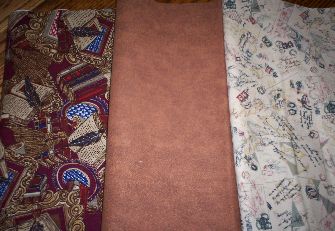
These are the fabrics I chose from my stash. I didn’t even need to go shopping for the retreat.They are also an example of three coordinating fabrics to use in a quilt.
We were all told to bring a lunch for Friday, which I forgot. NOT TO WORRY! The "goodies" I mentioned took care of my lunch very nicely. (Including my white chocolate chip/pecan cookies requested by my friends). We spent the day buzzing like twenty-five little bees. Buzzing? Yup, it sounded like a beehive with twenty-five sewing machines doing what sewing machines do best. Not to mention twenty-five chattering, friendly, happy women. At about 5:00 P.M., it was supper time, (dinner time, eat, chow down, you get it) at the conference center cafeteria. We had a nice "down home" meal. That’s what you get in Alabama. After dinner, we played Quilter’s Bingo. All the winner’s prizes were fat quarters. We returned to our building at about 7:00 and started sewing again. All afternoon and evening, we heard lots of chatter about "frog stitching," rotary cutters, and who chose the prettiest fabrics for this quilt. We sewed until after midnight and all went to sleep without even having a "gab session" in our rooms. Up again before 7:00 AM, and to the cafeteria for another "down home" meal and back to work. By this time, many of us were nearing the end of the steps in the "Mystery Quilt." We were shown examples of the finished product, and continued on to the finish. Most of us finished the main body of the quilt, making plans in our minds what we would do at home to finish it with backing, batting, and binding.
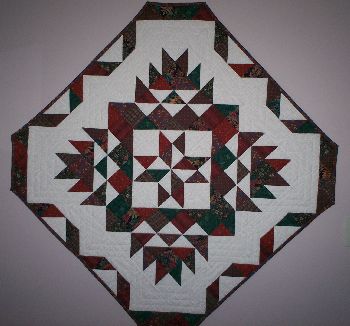
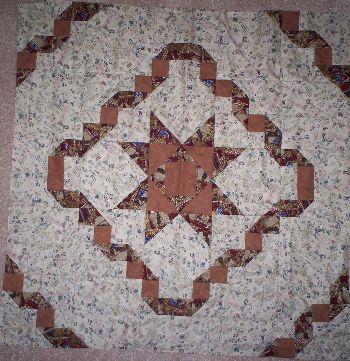
The first picture here is my quilt top from this retreat. The second is a Mystery Quilt from another retreat a number of years ago.
So you see, there are definitely advantages to joining a quilt guild. A quilting retreat is only one of them. We have taken bus trips to nearby quilt shows, quilt shops and sewing venues. We always have a great time, and the sisterhood of the group is the best part of the fun. Guilds are a great place to learn about quilts and quilting as well as meeting and finding new friends.
At the retreat, we were all the happy receivers of all kinds of "quilty" door prizes. There were a lot of books, and sewing notions that we came home with. I received was a pair of battery operated scissors and a book called "Fabric Shopping," by Alex Anderson. Unfortunately, this book is no longer in print. However, I have recommended to Greg that Alex Anderson’s other books be added to the ATG shopping area. Her books are very good references for new quilters. They are easy to understand, and they give a lot of good information.
Last time, in this blog, we talked about fabrics. I have learned much about fabrics from Alex Anderson’s book in the last week. It is a small book, packed with basic information about how to choose quilting fabrics. I’d like to share a few things, some I already knew and others that elaborated on some things that I had heard before.
Focus fabric, which would be the main fabric to choose, adding other fabrics that have coordinate, or go well with the focus fabric, whether by color or print. Choose a focus and then choose fabrics that are the same color, or have the same color in them. Or choose a fabric that has a print that compliments the print of the focus fabric.
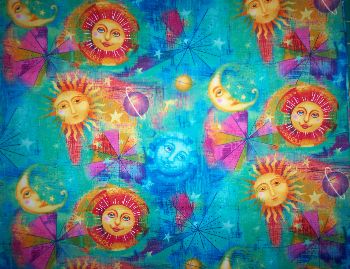

This is a good example of a focus fabric, the second picture is of the focus fabric and other fabrics that would go well with it.
Hue is the name of a color. It is the difference from one color to another. Red, yellow and blue are hues.
Value: is an important word when it comes to fabric. It is the "degree of lightness or darkness of color." In other words, if you visualize a scale, showing blocks of grey from pure white, to jet black, you will see the value of the color of grey. Or if you show a scale of reds from pure white to the darkest possible red, that also is value. Any color in all its shades of lightness and darkness is it’s value.
Some people, who don’t have an inborn sense of color may want to rely on a color wheel to help them learn to make fabric selections. A few terms may help to learn more. Look at the color wheel below.
Primary colors are red, yellow, and blue. Combinations of these colors make up the other colors on the wheel.
Secondary colors are created by mixing equal parts of primary colors. Orange is made with red and yellow. Look at green to see what colors combine to make green. Now, look at violet. Green, violet, and orange are secondary colors.
Complimentary colors are two colors opposite from each other on the color wheel. Example: red is opposite to green, blue is opposite to orange. Look at the color wheel and find complimentary colors.
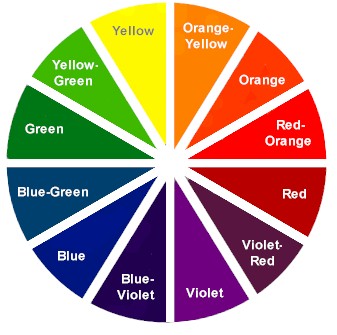
Analogous colors are next to each other on the color wheel. In combination, these colors are pleasing to they eye. You can also pick out examples of analogous colors.
Monochromatic colors are those that come only from the same color family, in equal numbers in light, medium, and dark. However, if you choose to make a monochromatic quilt, be sure to choose fabrics from very dark to very light, even white, to give the quilt more interesting to the eye. If the colors are all the same value, they will simply "run together" appearing as all the same fabric, rather than a mixture of lights and darks, The same is true of quilts of many colors. You need to include a wide mixture of lights and darks to see the difference in fabrics. The variety of value across the quilt makes it more interesting to the eye.
I am including pictures of fabrics in my stash. The first is an example of three fabrics that would work because the theme is similar, and there are three values, light medium and dark.
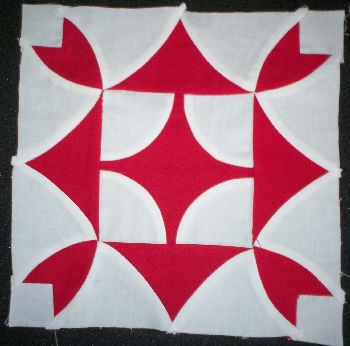
Example two: I added two more fabrics that completely throw off the theme and the color. These fabrics don’t work unless you add many more fabrics and make it a "scrappy quilt".
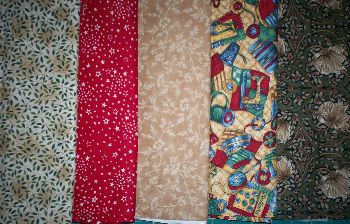
Example three: This is an example of fabrics that don’t seem to look good together, but they are the same print in different colors. Used in a quilt with the "fan" theme, they should make an eye catching quilt. I hope so, since I have plans for them in a quilt together, along with an off white background fabric, with a fan theme. 
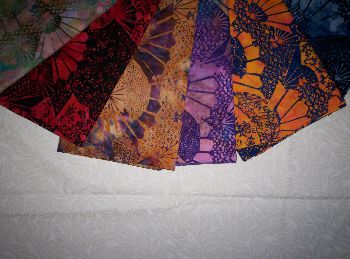
There is a focus fabric, and the other fabrics are colors taken from the focus fabric. There is no particular theme in any of the coordinating fabrics, but the color work with the focus.
A little more about Quilt Design Wizard: This program is available in the ATG shopping area. This a terrific program for a beginner, or someone who is not comfortable with their skills. The entire program is a teaching tool. You can design and make a quilt from beginning to end with the tutorials that are all in this CD. There are 200 block patterns that can be used in any size. It shows sewing/assembly instruction specific to each block. This is a really cool tool. Just click from one design to another do decide whether your skills match the block that you have chosen. It will print instructions and templates; for foundation piecing as well at templates for piecing. It show instructions for rotary cutting, and strip piecing which is the fastest way to make a quilt. If you are thinking about taking a quilting class, but don’t want to leave home. This is the way you can do that. Get Quilt Wizard by clicking on this link or in the ATG shop.
These pictures are screen shots from The Quilt Design Wizard program
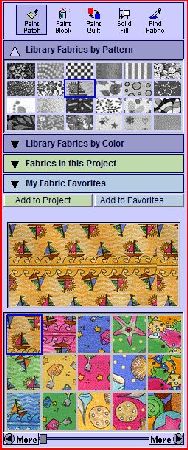
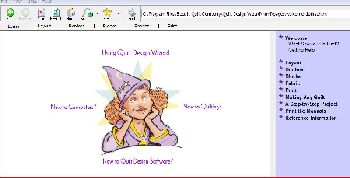
Well, friends, I hope this is all helpful to you. I’d like to thank Alex Anderson for her permission to use the material in her book to help you learn more about fabrics and color. Hopefully, this will put you one step closer to making some wonderful quilts of your own.
Quilter’s Jargon:
Quilter’s cut and press:
That’s a neat tool that has a cutting mat on one side and an ironing mat on the reverse.
Mystery Quilt:
A quilt made in a group setting where nobody knows the resulting quilt design until it’s finished.
Scrappy quilt:
A quilt made of many scrap fabrics.